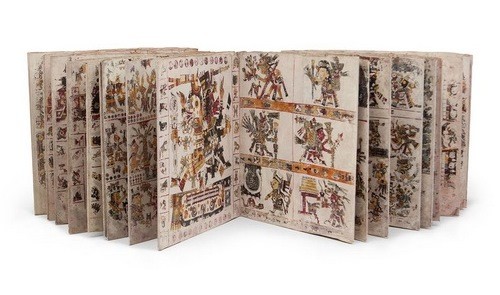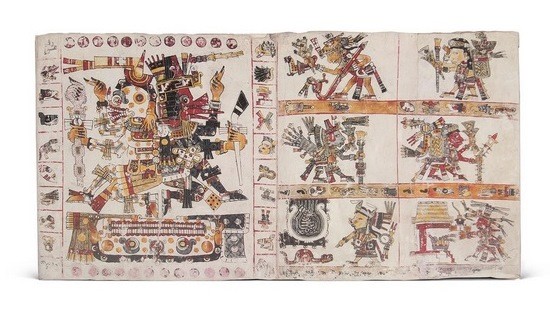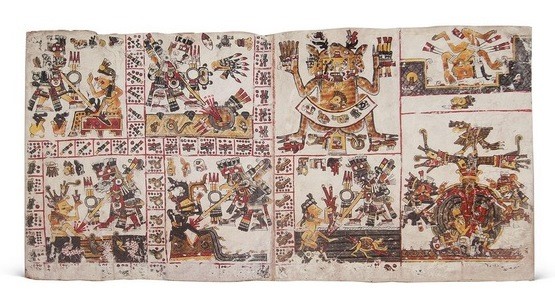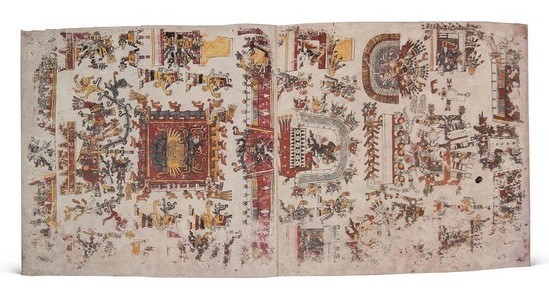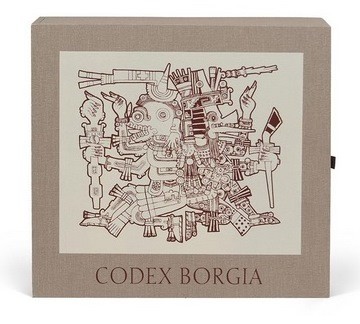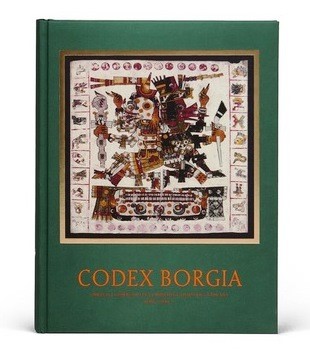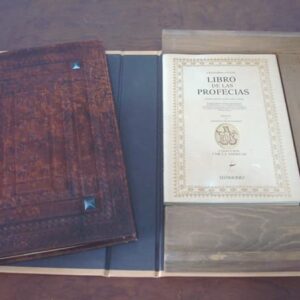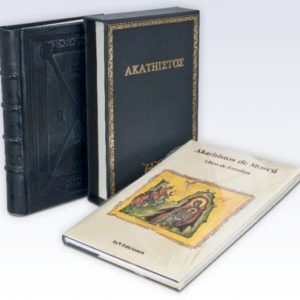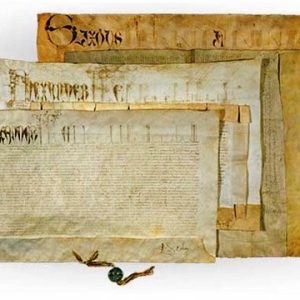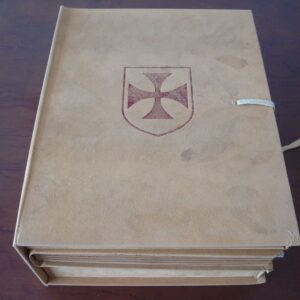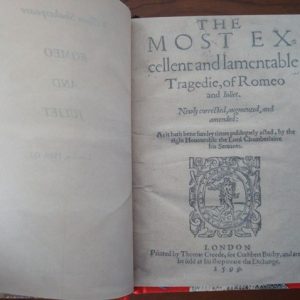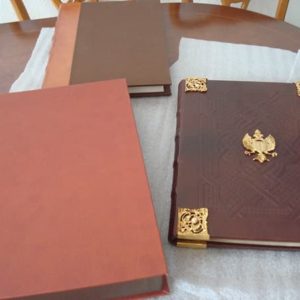Description
The original of this facsimile edition is also known under the names of Borgianus Codex, Borgian Codex or Velletri Manuscript. Its existence was not known until the end of the 18th century as part of the Museum of Cardinal Stefano Borgia in Rome, hence the most common name with which the Aztec codex is known: Codex Borgia.
It is a work of ritual-calendárico content supposedly made in the area of influence of Puebla-Tlaxcala-Cholula in pre-Hispanic times. It is made in a long strip, composed in turn of 14 fragments, made with tanned deer skin on which a layer of stucco was applied to receive the paintings. When folded into a screen, it forms 39 pages or sheets of approximately 27 x 26.5 cm, with which it unfolds to a length of approximately 10.35 m. It is painted on both sides, except for the start and end pages that do not contain paintings, thus the total number of pages painted is 76.
Its content focuses largely on the description of the 260-day indigenous calendar or ritual and divinatory cycle, relating the different names of the days with deities, rituals that favor destiny depending on the day of birth, destination of marriages according to the calendar date of their names, etc. It also contains some sections that are currently the subject of discussion by the specialists in terms of the information they present.
The Borgia Codex is one of the most beautiful pre-Columbian manuscripts, of the few still prevailing. The exact place of origin of this codex is not known, however, there is no doubt that it originated in the high central lands of Mexico (possibly near Puebla or the Valley of Tehuacán), an area that was under the Aztec regime in the era of conquest. Obviously this codex was painted before the arrival of the Spaniards, since it does not show any European influence. It was probably made at the end of the 15th century. In the sixteenth century he was sent from Mexico to Spain, and from there to Italy. The great German student Alexander von Humboldt saw it in Rome in 1805, belonging to the possessions of Cardinal Stefano Borgia, who had died the previous year.
The Borgia Codex is, like most pre-Columbian manuscripts, a religious book, made by highly specialized clerks. The Mexican codices are not books in the normal sense of the word, for reasons of their realization as much as for reasons of their use. At this time there was no means of printing to make several copies at once. On the other hand this was not the intention either, since these manuscripts were not made to simply store information or to read stories to entertain themselves.
The goal of Mesoamerican books is to retain time and capture history and religion. Apparently, images were more important than words, especially with the Aztecs and other peoples of central Mexico. We must remember that the stories are transmitted in an oral tradition. Likewise, these books were not made to be contemplated by an individual reader, but more than that, they were used in an active way as part of religious ceremonies, when priests made readings to the audience, to make prophecies or used them to make predictions of the lives of those who were about to marry or of their future children, etc.
The, unfortunately, very small sample of prehispanic codices, that the dementia and religious ignorance of the sixteenth century Catholic culture has left posterity, allows us to suppose that each manuscript was made as a unique piece of art, although apparently codices sequences more old ones have been copied frequently.
The Mesoamerican codices are folded books: long strips of animal skin or amate paper, which were folded in accordion form. Then, the codices were covered by a layer of white plaster, so that the clerk clerk could paint the manuscript, using both mineral pigment and organic.
All the Mayan codices were made in amate paper, which is obtained from the bark of the wild fig (ficus cotinifolia). The Mayan codices are read from left to right. The Borgia Codex, on the other hand, reads from right to left. The original codex is made of deer skin. The leather strips are joined from end to end, resulting in a book whose sheets measure 27 x 27 cm. It is made of 39 leaves, of which 37 were painted on both sides, and the two remaining only on one side, to be later glued to the wooden boards, which protected the codex. This gives a total of 76 painted pages and a length of 11 meters.
Unfortunately no one lives who can read the codex in the way an Aztec priest would read it. Therefore there is often much speculation about the content and exact meaning of this manuscript. However, we know exactly that it is a ritual book. The original codex begins with a tonalpohualli, or “book of days.” This book describes the famous 260-day ritual calendar. These are the result of the combination of 20 days with 13 coefficients. The following pictures show the 20 gods, with whom the 20 days are associated. Follow a plate with the 9 gods of the night. Then the symbols of the days come in association with the cardinal points. Other sheets refer to the 365-day solar year, which is formed 18 times 20 days plus 5 remaining days, in the Mayan calendar as well as in the Aztec calendar. The combination of the 365-day calendar with the 260-day ritual calendar results in the famous 52-year calendar wheel. Pages below give predictions for each quarter of this 52-year period, when they expected food in abundance, or illness and hunger, or little or much rain.
The longer part of the Borgia codex is, at the same time, the most enigmatic part. Apparently it reflects a narrative, and therefore it is very special. Probably it is an exhibition of historical events that took place in Tula and Teotihuacan, showing temples, ball games and many sacrifices. Finally the codex contains sheets that were used to make prophecies about marriages. One of the last pictures shows a beautiful painting of the Sun God surrounded by 12 birds and a butterfly, symbolizing in this way the 13 levels of the sky.
Complete copy and in perfect condition of the extraordinary edition of 2007 of Testimony, which won the First Prize of the best published books in the Facsimile Books category.
Limited edition, numbered and certified. Facsimile binding of the original wood, format 27 x 29.5 cm. 84 folded pages.
The work, as is usual in this type of editions, is complemented with a book study format 23 x 31 cm. 560 illustrated pages by Juan José Batalla Rosado.
Shipping costs on account of the buyer, according to order and destination. Consult us without obligation (indicating the reference of the article) any doubt.




